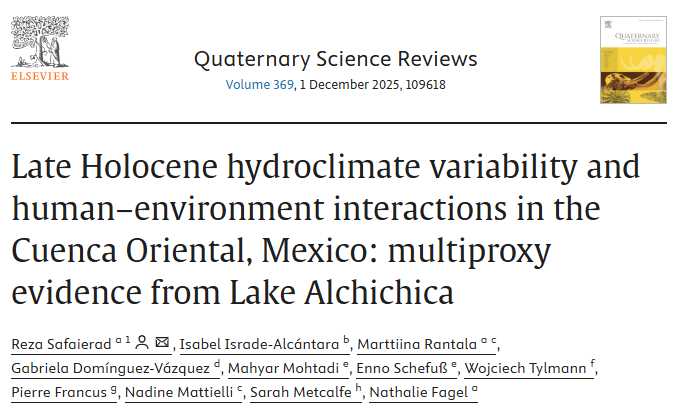In our latest publication, we return to Mexico, to the semi-arid Cuenca Oriental region, which has long been inhabited by agricultural civilizations. The article presents new data from the Alchichica crater lake, located 18 km from the ancient city of Cantona (600–1050 CE). Isotopic data allowed us to identify three major drought periods: (I) ca. 500–1300 CE, (II) the 17th century CE, and (III) the period after 1970 CE. Anthropogenic indicators point to persistent interactions between humans and the environment. The co-author of the publication is Wojciech Tylmann. We invite you to read it!
https://www.sciencedirect.com/science/article/abs/pii/S027737912500438X
Safaierad R., Israde-Alcántara I., Rantala M., Domínguez-Vázquez G., Mohtadi M., Schefuß E., Tylmann W., Francus P., Mattielli N., Metcalfe S., Fagel N., 2025, Late Holocene hydroclimate variability and human–environment interactions in the Cuenca Oriental, Mexico: multiproxy evidence from Lake Alchichica. Quaternary Science Reviews 369, 109618. https://doi.org/10.1016/j.quascirev.2025.109618
